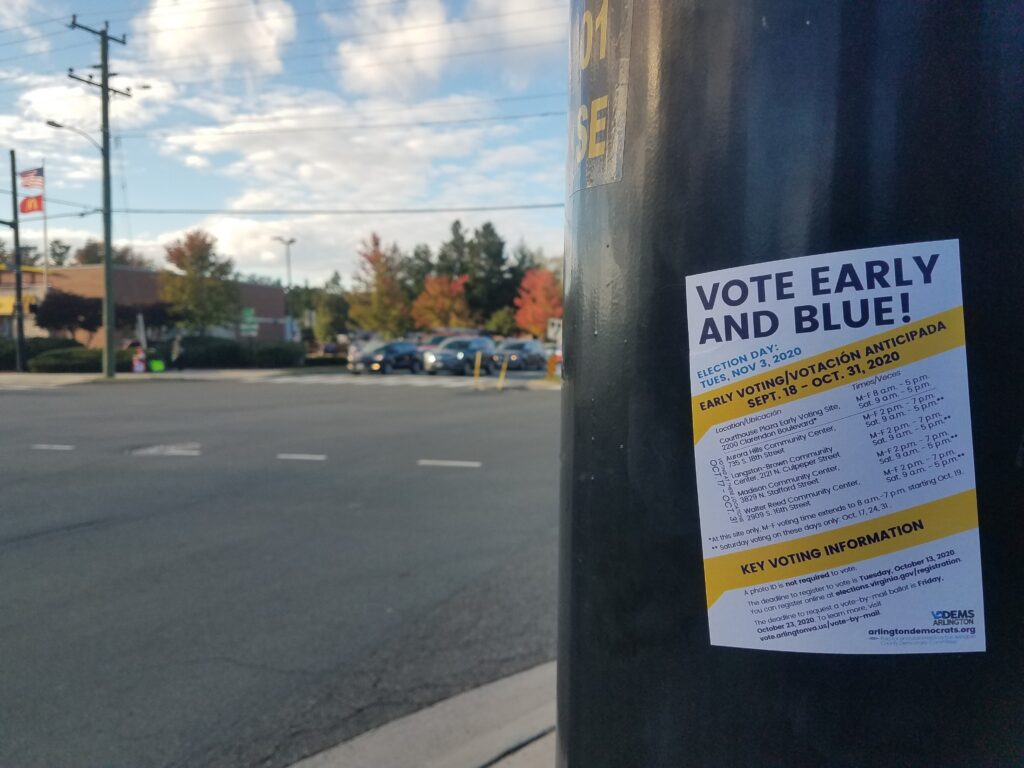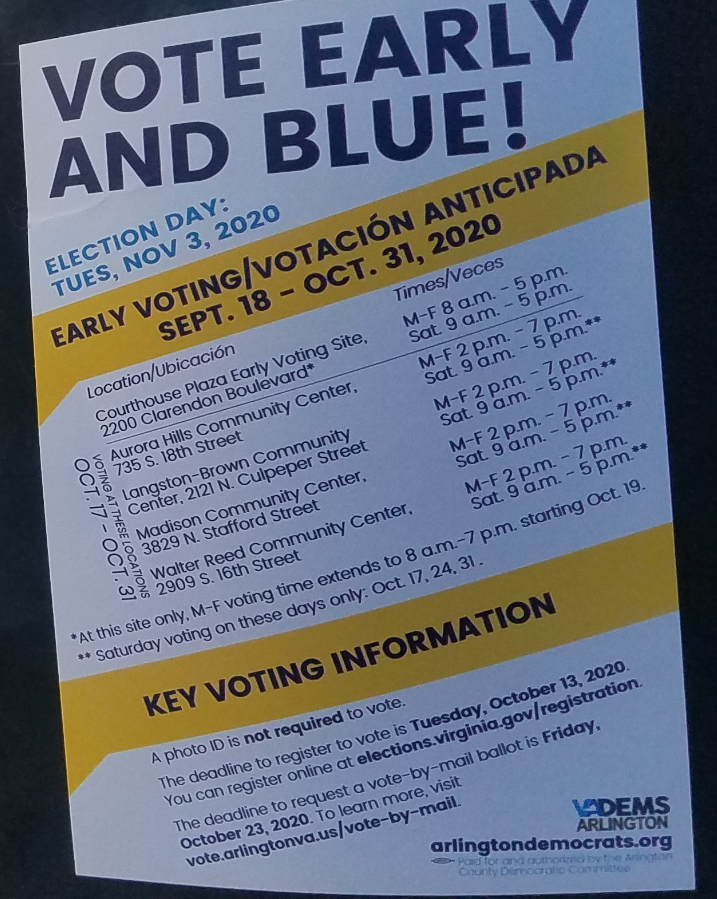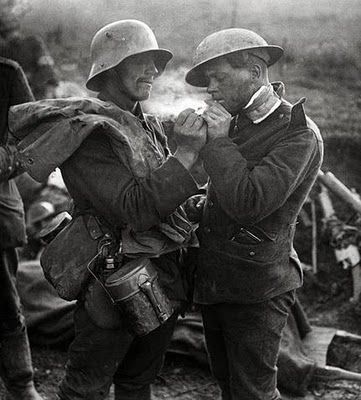Wednesday, October 28, early morning. Downtown businesses boarding up already.
I am returning from Brunswick, Maryland, after a few days in western Maryland and one day walking the length and breadth of Antietam battlefield.
I arrive at DC Union Station. Not much going on. For a central train station anchoring a population of a few million, DC Union Station is somewhat pathetic and never very busy, but less so than usual. On my trip out, teams of armed police were accosting people demanding to see their tickets. What was the meaning of this? Lockdown enforcement, maybe. I’d never seen it before. In any case, the mood is somewhat gloomy. The commuter train I’d rode in on was naturally rather empty, and they’d just announced further service cuts. Amtrak itself formerly ran one train a day each direction through Harpers Ferry en route to Pittsburgh and Chicago but now seems to be down to two per week. This is pretty depressing
I exit the station, still on the early side of the 6am hour. It’s still dark.
This is a building I am well familiar with. The building itself bespeaks glory and prestige of great architecture and the civilization that dares to design such. We don’t get designs like that anymore. The station dates to the 1910s, I think, and was used heavily by Washington politicians in its early years. It is even a long walk from the Capitol building. (I don’t think many politicians do this anymore, though Joe Biden has long had the habit. Delaware is one of the few places from which it’s at all feasible to even do.)
The glory and romanesque architecture of the train station itself contrasts wit the street scenes. I am told Union Station was, in my father’s heydey here in the area in the 1970s-1990s, effectively one part of the giant quasi-ghetto. Dangerous. Don’t hang around here. Don’t walk around here at night. This has not really been my experience here.
I think I first remember it in the late 2000s and at that time while it still seemed dangerous at night, it was a long way from the Bad Old Days. By the 2010s, when I had pretty regular experience at the station, it improved considerably. The new order in Washington is metaphorizable as a battle line in which one side pushes the other side out. The one side is sometimes reduced to being ‘White, young, wealthy’ and the other ‘Black, not wealthy.’ My natural inclination is to favor my own people, you’d think, but I hardly see the Bubble People that make up the ranks of the one side to have much in common with me. In any case, crime is way down but one cannot spend time in Washington east of Rock Creek Park almost anywhere without seeing signs of the past, echoes of the ghetto. The park in front of Union Station provided such an echo: A black man was ranting, possibly at someone or possibly at nothing, and threatening violence.
I get on a bikeshare bike to head towards Virginia. My legs are plenty tired from lots of walking over a few days, but bicycling is fine. It uses different muscles. I take a slow and meandering route. No hint yet of predawn glimmer in the sky when I begin but towards the end of the trip there is. I am going east, navigating by instinct. I know my may around on a bicycle on these streets, and from September 29 to October 12 I was in DC daily for census work, seeing places I’d never seen.
Still not much traffic as you’d normally expect downtown. (How long will the shutdowns/disruptions last? How much of the continuation of the disruptions is people preferring a perceived soft-vacation of staying home and never having to go into the office, and bosses morally disarmed?)
A few people here and there. A few signs here and there, but DC is a true one-party state with a foreordained result in any presidential head-to-head which makes putting up Biden signs a little ridiculous.
In November 2016, for every 25 voters resident in DC, 23 voted Hillary, 1 vote Trump, and 1 voted for someone else. These are communist-bloc rubber-stamp-election-type results, of course. I am sure the obvious one-party lock nature of DC, that even the dimmest and least perceptive potential voters are aware of, effectively discourages Republican-leaning voters from voting at all. And a lot of the daytime population of DC consists of commuters, so the average person you encounter in greater downtown is much more likely than those odds to be a conservative or even a Trump supporter, but they don’t say it. They exist on shibboleths. I had two S*IS professors who I was sure were pro-Trump but only by reading between the lines.
Not many people, not many signs, not much light, and I had the heightened perception of someone at the end of a long trip on the lookout for things to see.
Most conspicuous are work crews, some of them clearly in the process of erecting plywood boards, turning nice glass office-front and storefront windows into fortresses. The goal: Make easy vandalism or looting difficult, discourage casual looters.
I saw the same thing in June, even in Arlington after the worst of the looting. (General looting never crossed the Potomac, but one CVS was hit on Columbia Pike.) I was down here most of the key rioting/looting days, and after so many stores were hit and looted, generally with police doing nothing, businesses prudently began boarding up.
I was familiar with the process from June. They’re clearly expecting fairly explicit political violence associated with an election, Third World style. They might have Black Lives Matter signs (a process that reminds me a lot of the 1970s-era observation by the Czech essayist, later president, on the psychology of the greengrocer putting up Workers of the World Unite sign in his shop window), but talk is cheap. Money talks, and looting and vandalism or potentially arson are clearly a worry.
This may not be not pure political terrorism or extortion, the implied threat of violence if one side doesn’t win, but it’s in the ballpark.
As to the scenes of open looting and anarchy I saw in late May and June, I won’t soon forget them. I was very much up close. A clothing store near my old office was hit by a gang of about 30 Black teenagers as I walked by. Some of them had baseball bats. I stupidly made a point to watch them a few moments and one of their watchers, a black teenage girl warned me not to “snitch.” The scenes those nights are worth much more ink. The scenes of chaos coexisted with scenes of eerie normality, as if mass looting, graffiti everywhere, and the occasional fire set by hotheads within a roving mob were all part of the normal cityscape. This is straight out of dystopian fiction.
I came to interpret these late May and June riots, the embers of which have simmered for months, as Lockdown Riots. When authorities began pulling the ‘Lockdown’ trigger in March, I predicted violence would eventually come of i all, but didn’t know exactly how. I remember by the week of March 16 seeing visions of violence and destruction associated with the lockdowns, and it is no surprise the riots began the exact week states began reopening. People were bored and frustrated, with their usual social networks disrupted for the entire spring. Schools were closed, of course, as the Panic demanded. Few seem to have noticed this correlation, but it looks obvious in retrospect.
I was downtown on the overnight of November 8-9, 2016 (the hours after polls closed), and saw many unforgettable scenes there as well, some of which clealry foreshadow the Lockown-induced, politicized riots and looting of mid-2020. Luxury shops in Georgetown were also hit that night, with police as usual flatfooted, even those around doing nothing. (What is the purpose of the police if they won’t enforce order? I wonder. They seem to have orders to never stop looters. I saw this again ion May 31 and June 1, 2020.) What will the overnight November 3-4 be like?
Later on the news I saw reports of this








